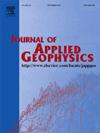Deep learning-driven multi-frequency seismic inversion for enhanced thin-layer stratigraphic characterization
IF 2.1
3区 地球科学
Q2 GEOSCIENCES, MULTIDISCIPLINARY
引用次数: 0
Abstract
Acoustic impedance derived from seismic data through inversion algorithms serves as a critical parameter for stratigraphic characterization. However, the limited resolution of seismic data poses significant challenges for accurately predicting acoustic impedance. In this study, we demonstrate that multi-frequency band seismic signals, obtained via continuous wavelet transform (CWT) based on a Ricker wavelet, provide a more precise representation of thin-layer acoustic impedance variations than the original seismic signal. Additionally, the Multi-Head Self-Attention Mechanism enables flexible, nonlinear mapping between parameters by capturing contextual relationships. Therefore, integrating a Multi-Head Self-Attention Mechanism with multi-frequency band seismic signals is essential for improving impedance prediction. To leverage these advantages, we introduce the CWT-CNNTrans algorithm. This method combines stratigraphic encoding data with multi-frequency seismic signals, which are processed by multi-scale convolutional neural network (CNN) modules to extract essential stratigraphic features as multi-scale geological priors. These priors are then integrated into a Transformer architecture, enhancing the accuracy of acoustic impedance predictions and improving the characterization of thin-layer structures. Comparative experiments confirm that incorporating multi-scale geological priors and optimizing the network architecture significantly improves prediction accuracy, enhances stratigraphic continuity, and mitigates overfitting in scenarios with limited geophysical data.
基于深度学习的多频地震反演增强薄层地层表征
通过反演算法得到的地震资料声阻抗是地层表征的关键参数。然而,有限的地震数据分辨率给准确预测声阻抗带来了重大挑战。在这项研究中,我们证明了通过基于Ricker小波的连续小波变换(CWT)获得的多频段地震信号比原始地震信号更精确地表示薄层声阻抗变化。此外,多头自注意机制通过捕获上下文关系实现参数之间灵活的非线性映射。因此,将多头自关注机制与多频带地震信号相结合是提高阻抗预测精度的关键。为了利用这些优势,我们引入了CWT-CNNTrans算法。该方法将地层编码数据与多频地震信号相结合,通过多尺度卷积神经网络(CNN)模块进行处理,提取地层基本特征作为多尺度地质先验。然后将这些先验知识集成到Transformer架构中,从而提高声阻抗预测的准确性,并改善薄层结构的表征。对比实验证实,结合多尺度地质先验并优化网络结构可显著提高预测精度,增强地层连续性,缓解地球物理数据有限情景下的过拟合问题。
本文章由计算机程序翻译,如有差异,请以英文原文为准。
求助全文
约1分钟内获得全文
求助全文
来源期刊

Journal of Applied Geophysics
地学-地球科学综合
CiteScore
3.60
自引率
10.00%
发文量
274
审稿时长
4 months
期刊介绍:
The Journal of Applied Geophysics with its key objective of responding to pertinent and timely needs, places particular emphasis on methodological developments and innovative applications of geophysical techniques for addressing environmental, engineering, and hydrological problems. Related topical research in exploration geophysics and in soil and rock physics is also covered by the Journal of Applied Geophysics.
 求助内容:
求助内容: 应助结果提醒方式:
应助结果提醒方式:


